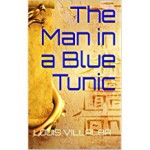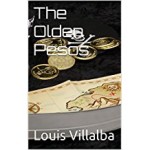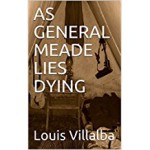
The work of Anton chekhov is considered the bible of short stories. Some writers read one every day to enjoy the brief accounts by this classic Russian author who was also a doctor. Chekhov wrote more than two hundred short stories. I recommend this practice to all my readers and friends. The following snippet comes from his tale entitled “The Witch:”
“Nowadays, you must remember, all the treasures are under a charm. To find them and see them you must have a talisman, and without a talisman you can do nothing, lad. Yefim had talismans, but there was no getting anything out of him, the bald devil. He kept them, so that no one could get them.”
The young shepherd crept two paces nearer to the old man and, propping his head on his fists, fastened his fixed stare upon him. A childish expression of terror and curiosity gleamed in his dark eyes, and seemed in the twilight to stretch and flatten out the large features of his coarse young face. He was listening intently.
“It is even written in the Scriptures that there are lots of treasures hidden here,” the old man went on; “it is so for sure . . . and no mistake about it.”
*******
Talismans and amulets are often mentioned in the literature. I have taken the liberty of including a real story about one of them. It is featured in my recent book “Afterlife Tracks: Glimpses of the Occult.” I have attached a picture of it.
THE AMULET
“I know there are people who want to hurt you, and I do not want them to do it.”
With those words, Shada warned me of an unforeseen danger. She had been my patient for several years. I had taken care of her when she had insurance and when she lost it. With her dark eyes, she expressed her gratitude and her fear. I also perceived the seriousness of the threat in the resolute grimace on her red lips, in the rigor of her svelte tall figure which was tensed up like a flagpole in the wind. Her flowery perfume and her thick Arabic accent gave out her Middle Eastern homeland, her struggle to survive in a society totally at odds with hers, her failed attempts to adapt to a foreign land where her dreams had never been fulfilled, her forlorn existence among her compatriots, and her anguish at the disappointment of her faraway relatives she had left behind.
At the time, I was the medical director at a hospital. Many people who envied or disliked me had their sights set on me. I had no idea how she had learned of this danger because she did not work in the hospital and was not related to anyone around me. Perhaps she could sense the severe stress I endured day after day. She reached into a small leather purse and drew out something carefully wrapped in transparent plastic paper. She peeled it off gingerly as if opening candy in the middle of a movie theater and handed it to me. Hanging from a small silvery chain was a four-finger-breadth silver horseshoe with a big, blue eye in the center. It was light as if made of aluminum, boasted smooth borders and surfaces graced with foliage ornaments, and the chickpea-sized iris of the eye had the texture of a blue opal.
“Carry it with you always,” she said.
I accepted it. Her intentions were good, and I did not wish to dishearten her. Around this time, my wife and several of her friends gathered once a week in different homes to have lunch and chat. On one occasion, they met in my house and played Ouija for the first time. On the dining room table, they placed a complete alphabet and in the center, a line marked with “yes” and next to it another with “no.” A glass was turned upside down and all players, except my wife, reached with one hand and touched the glass bottom. My wife wrote down all the messages.
Her friends asked,
“Is anyone there?”
Everyone repeated it several times until the glass moved to the line marked with the word “yes.” Then they asked,
“Who are you?”
The glass slid toward the letters of the alphabet spelling the word “Felicita”, which in Spanish means congratulations. Skeptical, my wife smiled with cynicism and remarked,
“Do you see that? The spirits are congratulating us for something.”
Her friend Lola suddenly turned pale and exclaimed in a stifled voice,
“It’s my mother-in-law. That was her name.”
No one at the get-together except Lola knew the name of this lady who had died twenty years earlier. At the time, Lola was having serious marital difficulties. Letter by letter, as if guided by an occult hand, the glass composed a message encouraging her to stay married to her husband and reassured her of his love.
The day of their gathering, I arrived home from work earlier than usual. I saw my wife and her friends in the dining room playing a game I had never heard of. Jokingly, I grabbed my amulet and walked over to the entrance of the room where they were playing. I swung the silvery horseshoe on its chain with the big blue eye facing them. As soon as I did it, they all rushed out of the room in terror. The glass, which they had been barely touching with their fingers, uncontrollably spun like a top, lurching from side to side atop the table. Since that day, my wife and her friends never played this game again.
The episode of the amulet and the Ouija challenges our comprehension since it surpasses human logic. One might think that Lola, the only one in the group who knew her late mother-in-law’s name, moved the glass towards each of the letters to spell the name and the message she wanted to read. But this had not been the case. Every participant in the game assured me that the glass had moved by itself; that it was touched ever so lightly with their fingers.
******************
I carried the gift in my pocket for a while. I do not know whether it worked. My enemies did not get rid of me. But those hateful people subjected me to horrendous stress. I survived, put the amulet in a drawer, and lost sight of it. With my recent move to Florida, it resurfaced. The magic horseshoe had lain among little trinkets—a silver money clip, old coins, and university buttons. As you can see in the picture, the passage of time has dulled the colors and blurred the ornaments.


































